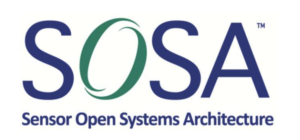Open standards play a crucial role in the development of electronics for the defense industry. In 2019, when the Department of Defense (DoD) released the Tri-Service memo, companies were directed to implement a MOSA (Modular Open Systems Approach) approach – a set of principles and practices aimed at promoting modularity and interoperability in system architectures.
This directive validated the efforts of many companies and organizations that had been working towards developing and implementing open standards like VPX (VITA 46), published in 2007, for decades. As technology continues to develop, VPX has evolved into additional standards such as OpenVPX, and has been leveraged by other technical standards like SOSA™ (Sensor Open Systems Architecture) for C5ISR applications.
The Goal of Open Standards
The goal of open standards is to enable quick, affordable and cross-platform best practices for systems, software, hardware, electrical and mechanical engineering, while being vendor neutral. When data sharing and interoperability amongst all the military branches, systems and applications is a requirement, an open architecture approach forms the foundation for commonality among platform providers enabling the development of widely available solutions.
The Benefits of Each Standard
Each of the key open standards has gained prominence in defense electronics. Since their inception, VPX and SOSA have helped to enhance interoperability and flexibility in the design and deployment of defense and aerospace systems. Each has its own, unique benefits.
VPX (VITA 46)
VPX is a specific open standard developed by the VITA (VMEbus International Trade Association) organization for high-performance, ruggedized embedded computing systems. This standard helps to define the mechanical and electrical specifications for VPX modules, backplanes and chassis.
It supports high- performance computing with its use of high-speed serial fabrics, like PCI Express, 10 and 25 Gigabit Ethernet. These various features help to enable system designs with superior processing power.
performance computing with its use of high-speed serial fabrics, like PCI Express, 10 and 25 Gigabit Ethernet. These various features help to enable system designs with superior processing power.
VPX is a scalable architecture that allows for integration of various modules with different functionalities. Its scalability makes it adaptable to a wide range of applications.
It has been designed with modularity in mind so that easy replacement or upgrade of individual modules can be completed without having to redesign an entire system; further enhancing flexibility and the facilitation of technology upgrades.
VPX and SOSA are true open standards. Their openness creates a competitive environment that encourages multiple vendors to produce interoperable components and reduces dependency on a single supplier.
Suitable for use in rugged environments, VPX is ideal for military and aerospace applications where systems need to be able to withstand harsh conditions, like shock, vibration and extreme temperatures.
SOSA
The SOSA Technical Standard, which evolved from the VPX standard, is headed by The Open Group and was developed to help better address the specific needs of sensor systems in the defense and aerospace industry. Its focus is to standardize sensor interfaces and promote modular, open architectures for sensor-related components, aiming to provide a framework for developing interoperable systems that allow for easier integration of sensors and related components from different manufacturers, while reducing integration challenges. In this way, it builds on the component-oriented open standards, like VPX.
Also similar to VPX, SOSA promotes modularity and reusability, facilitating the development of systems where sensor components can be easily swapped or upgraded. This enables flexibility and adaptability to changing mission requirements.
promotes modularity and reusability, facilitating the development of systems where sensor components can be easily swapped or upgraded. This enables flexibility and adaptability to changing mission requirements.
Using open standards like SOSA can also help to keep costs down by fostering competition and preventing vendor lock-in. This allows for the selection of components based on performance and cost-effectiveness, rather than being limited to a single supplier’s proprietary solution.
SOSA also enables rapid technology insertion. New technologies and capabilities can be integrated into existing systems seamlessly, ensuring sensor systems remain current and effective.
VPX and SOSA Working Together
VPX and SOSA are not mutually exclusive in terms of system design. Chassis may incorporate a heterogeneous payload mix consisting of modules adhering to both standards. This is true in both 3U and 6U systems addressing a wide range of applications.
Backplane profiles supporting both VPX and SOSA modules and their respective profiles are common in the industry today and likely will be for the foreseeable future. VPX development platforms enable system designers to create backplane connectivity using the required module payload for the specific application.
This capability widens the field of available module options and results in more flexibility in defense electronics systems by enabling the best options across the standards. Time to deployment can be reduced in programs that allow heterogeneous payloads. System integrators like LCR work with clients to determine the optimal module set.
Both VPX and SOSA contribute to the development of open, modular and interoperable systems in the defense and aerospace industries. Each standard provides a foundation for the creation of adaptable and future-proof systems in keeping with MOSA directives.


Leave a Reply
You must be logged in to post a comment.